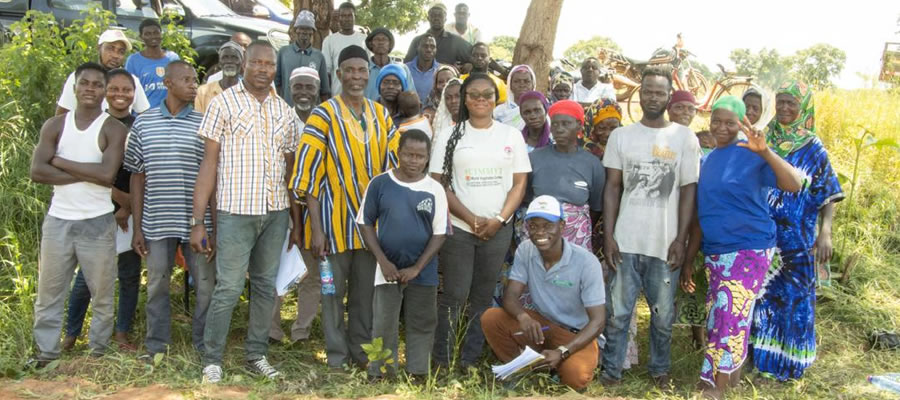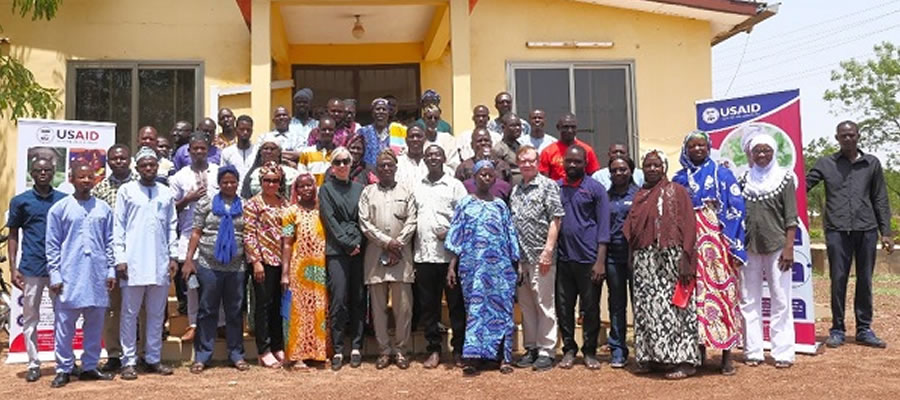

PHYSICAL CHARATERISTICS, LOCATION AND SIZE
The Savelugu Municipality with its administrative capital at Savelugu was carved out of the Western Dagomba District Council in 1988 under the Local Government Act 462, 1993 by Legislative Instrument (LI) 1450. Nanton District was also subsequently carved out of the then Savelugu Nanton Municipal Assembly changing the name currently to Savelugu Municipal Assembly.
The Municipality is located at the northern part of the Northern Region of Ghana. It shares boundaries with West Mamprusi Municipal to the North, Karaga and Nanton Districts to the East, Kumbungu District to the West and Sagnerigu Municipality to the South. The Municipality has about 81 communities with a lot of the communities concentrated at the southern part. The Municipality also has a total land area of about 125.79 sq. km.
Source: Savelugu Municipal Assembly
TOPOGRAPHY AND GEOLOGY
The Municipality is generally flat with gentle undulating low relief. The altitude ranges between 400 to 800 ft. above sea level with the southern part being slightly hilly and sloping gently towards the North.
The Middle and Upper Voltaian sedimentary formation characterize the geology of the Municipality. The middle Voltaian covers the northern part of the Municipality and comprises of sandstone, shale and siltstone. The Upper Voltaian covers the southern part of the Municipality and consists of shale and mudstone. Underground water potential is generally determined by this underlying rock formation, which has varying water potential for underground water compared to the upper Voltaian formation. Consequently, borehole drilling is expected to have a higher success rate in the northern rather than the southern section.
CLIMATE AND RAINFALL PATTERN
The area receives an annual rainfall averaging 600mm, considered enough for a single farming
season. The annual rainfall pattern is erratic at the beginning of the raining season, starting in April, intensifying as the season advances raising the average from 600mm to 1000mm.
Temperatures are usually high, averaging 34oC. The maximum temperature could rise as high as 42oC and the minimum as low as 16oC.
The low temperatures are experienced from December to late February, during which the North-East Trade winds (harmattan) greatly influence the Municipality.
The generally high temperatures as well as the low humidity brought about by the dry harmattan winds favour high rates of evaporation and transpiration, leading to water deficiencies.
DRAINAGE AND VEGETATION
The main drainage system in the Municipality is made up of White Volta and its tributaries. The effect of the drainage system is felt mostly in the northern part of the Municipality covering the areas between Nabogu and Kukuobilla.
These areas are prone to periodic flooding during the wet season, thus making them suitable for rice cultivation. One of the tributaries of the White Volta, Kuldalnali, stretches to constitute a natural boundary between the Municipality and Kumbungu District. The Municipality finds itself in the interior (Guinea) Savanna woodland which could sustain large scale livestock farming, as well as the cultivation of staples like rice, groundnuts, yams, cassava, maize, cowpea and sorghum.
The trees found in the area are drought resistant and hardly shed their leaves completely during the long dry season. Most of these are of economic value and serve as important means of livelihood especially for women. Notable among these are shea trees, (the nuts which are used for making sheabutter) and dawadawa that provides seeds used for condimental purpose.
The sparsely populated north has denser vegetation mostly with secondary forest. The populous south on the other hand, is depleted by human activities such as farming, bush burning and tree felling among others.
NATURAL RESOURCES
The Municipality is blessed with vast arable land with potential for both livestock and crop production. There a number of tourism potentials in the Municipality among which include the Saakpuli Slave Market, Tuunaayili, the former seat of the Dagomba Kingdom, Yoggu, which is said to be where the chief priest settled long ago and an Oxbow Lake at Zonchangni.
Among the tourism potentials, it is the Saakpuli Slave Market that attempts are being made to develop and preserve. The state of development is a tourist reception constructed through community initiative. The Municipality is however faced with unfavourable natural environmental conditions.
There is little tree-cover and it suffers harsh harmattan season, which leads to many bush-fires set up by farmers clearing their lands and hunters searching for game. The greatest threat however is the rate at which the tree vegetation is being cut down for fuel wood.
Farming along river courses has also caused vast silting of the few drainage systems which therefore dry up quickly in the dry season and flood easily in the wet season.
Recent gravel winning on good farmlands alongside the major trunk road and sand winning for which a greater percentage is used for construction work in Tamale without efforts at reclamation is an issue of concern.
Public places of convenience are inadequate and scarce in the area leading to indiscriminate defecation and waste disposal. The problems of poor disposal of solid and liquid waste, slum conditions and sewage degradation of the physical environments are becoming a nuisance.
Date Created : 2/13/2025 12:00:00 AM










 facebook
facebook
 twitter
twitter
 Youtube
Youtube
 +233 593 831 280
+233 593 831 280 0800 430 430
0800 430 430 GPS: GE-231-4383
GPS: GE-231-4383 info@ghanadistricts.com
info@ghanadistricts.com Box GP1044, Accra, Ghana
Box GP1044, Accra, Ghana